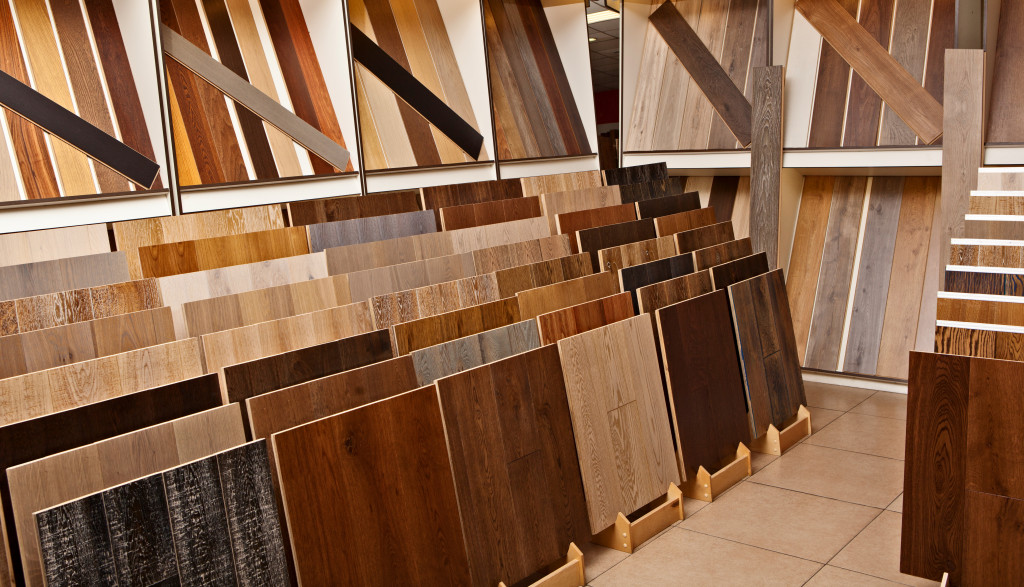Building a new house is a dream of many. From roofing and painting to interior design, everything makes you happy. You cannot wait for the property to be completed while watching heavy equipment like excavators dig holes into the ground and lift material. However, things take time. You have to decide on many things like flooring. It’s the most crucial decision, as it will determine how your house will look from the inside.
Choosing hardwood for your home can be exciting—and challenging—with so many attractive and sturdy options. You’ll be one step closer to nailing down the ideal flooring for your home if you understand the distinctions and similarities between the two varieties of hardwood.
The Differences
As the name says, solid wood flooring is made out of one solid piece of wood for each flooring board. Although it is sometimes considered that solid wood flooring is less sturdy than engineered wood flooring, this is not necessarily the case. Engineered wood flooring is made up of many component layers that are glued together to create the required thickness and wear. Engineered flooring is frequently thought to be more sturdy than solid wood flooring. However, this might vary depending on the manufacturer, structure, quality attributes, and where the flooring will be installed. When installing flooring in drier climates, engineered flooring may be less stable.
Construction
-
Solid Hardwood
Many homeowners regard solid hardwood to be the “gold standard” in flooring. It’s famed for its authenticity, durability, and timelessness because it’s made from one single piece of 100 percent hardwood. Solid hardwood is mostly sourced from the Appalachian region, where hardwood is prized for its solidity, color consistency, and polished grain, and is handcrafted in the United States by skilled Americans.
-
Engineered Hardwood
Natural wood layers on top, wood layers on the bottom, and a solid core in the middle make up engineered hardwood. The core is made up of five to seven crisscrossed slabs of plywood. It’s what makes engineered hardwood less prone to shifting, expanding, or contracting in response to changes in moisture, temperature, and humidity.
Style
-
Solid Hardwood
Solid hardwood comes in three species: maple, oak, and hickory, which are the hardest and most wear-resistant. You’ll find various ways to add personal style to your home with a choice of widths up to 5′′ and a multitude of colors and textures.
-
Engineered Hardwood
Engineered hardwood offers many of the same design options as solid wood. You might also come across ideas that are only achievable with engineered wood, such as specialty textures, extra-wide planks, softer exotic species, specific surface treatments, and color effects planks.
Installation
-
Solid Hardwood

Above-ground areas such as living rooms, dining rooms, bedrooms, and kitchens are the finest places to use solid hardwood. Because of the possibility of water and humidity, we do not recommend using solid in bathrooms or laundry rooms.
-
Engineered Hardwood
Engineered hardwood can be utilized in the same places as solid hardwood, but it’s better for radiant heating, basements, and concrete floors because of its engineered composition. However, stay away from restrooms and laundry facilities. Engineered flooring is great for tasks where you need your hardwood to match the height of an adjacent floor or fit beneath kitchen equipment because it is somewhat thinner than traditional solid hardwood.
Durability
-
Solid Hardwood
The type of solid hardwood and the quality of protective treatment determine how long it will last. Harder wood, such as hickory and oak, will withstand denting better, and goods with a lifetime finish will resist scratches better. Solid hardwood, in general, will last for many years, even if it has been sanded and refinished multiple times.
-
Engineered Hardwood
If the top layer is thick enough, engineered hardwood can be sanded and polished more than solid hardwood, but not as many times. The best scratch resistance is found in products with a lifetime finish, such as solid. Engineered hardwood is the method to choose if moisture, humidity, or temperature are an issue, such as in basement installations.
Cost
-
Solid Hardwood
Although solid hardwood flooring is typically more expensive than engineered hardwood, there are several factors to consider. A lifetime warranty, a high level of protective finish, a specific texture, or an artistic staining process can all add to the final cost.
-
Engineered Hardwood
Until you reach premium collections, which are more akin to solid hardwood, engineered hardwood is often less expensive than solid hardwood. They could have a thicker top layer that allows for more sanding and refinishing, or they could have unique designs.
Aesthetically, some people choose solid hardwood flooring or engineered wood flooring. They desire wider boards, longer lengths, or a combination of the two. Still, the most critical factors in deciding between solid or engineered are the type of home you live in, where it is located, your preferences, and the durability of the flooring from season to season. It also depends on the type of installation you’re doing and who’ll be doing it.

